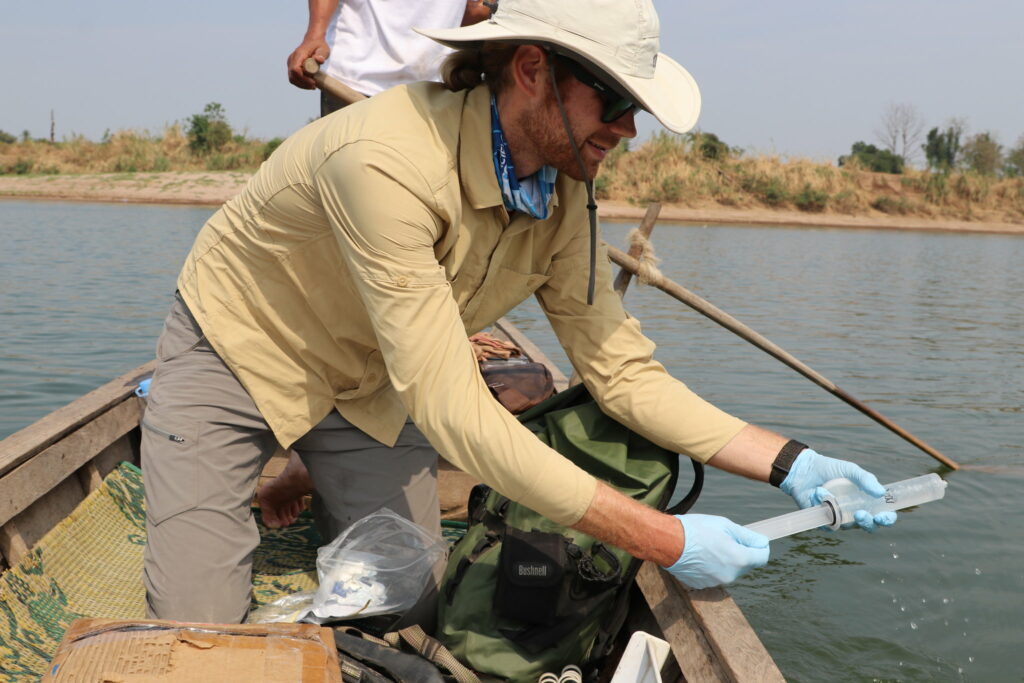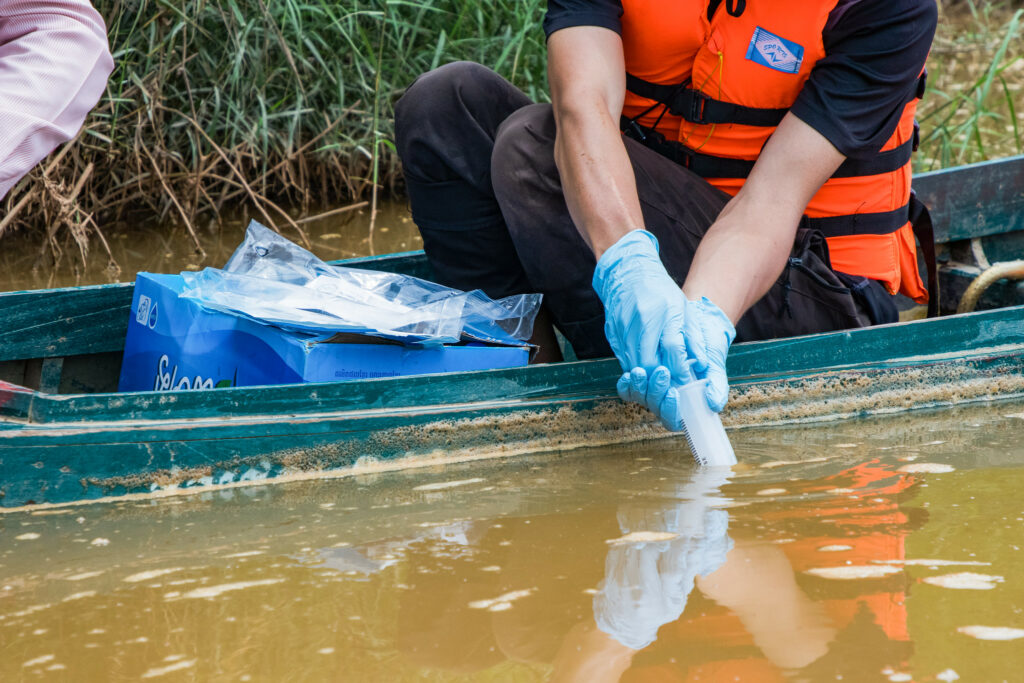


Environmental DNA (eDNA) sampling, which can be used to detect the presence of species based on traces of genetic material they shed into the environment, has proven to be a valuable tool for efficiently monitoring aquatic biodiversity. However, the potential of this technique has yet to be fully evaluated in the diverse tropical river system of the Mekong Basin. In 2022, FISHBIO and the local NGO Young Eco (YEA) carried out a project funded by the Wonders of the Mekong Project to conduct eDNA sampling at a landscape scale across the lower Mekong River and its tributaries in Cambodia. The results from this study represent an important first step in understanding the types of questions that eDNA analysis may help answer in the Mekong, which in turn could pave the way for integrating this technique into fisheries monitoring programs in the region.

As part of project fieldwork, YEA and FISHBIO researchers collected more than 50 eDNA samples from the Mekong River and its tributaries. Sample collection locations ranged from the Cambodia/Lao border to as far south as Phnom Penh, and included the mainstem Mekong River, Tonle Sap Lake, and the Sekong, Sesan, and Srepok (3S) tributaries in northeastern Cambodia. The samples were analyzed using metabarcoding, a technique in which fragments of DNA from a specific region of the mitochondrial genome are amplified. These sequence fragments were then compared to genetic reference libraries in order to identify many different species from a single water sample, thereby providing a “snapshot” of the fish community. The results of this analysis were published in the Cambodian Journal of Natural History (Eschenroeder et al. 2014), and they offer a first look at the eDNA’s ability to quantify Mekong fish community diversity. Developing best practices for eDNA sampling is an important step towards efficiently monitoring a multitude of species in the large and biodiverse Mekong River system, which can inform management and conservation actions for the watershed’s vitally important fisheries. Insights gained from this project are being applied in a paired study of eDNA and traditional fish sampling methods, which will generate valuable insight into the relative strengths and weaknesses of eDNA compared to capture-based sampling.